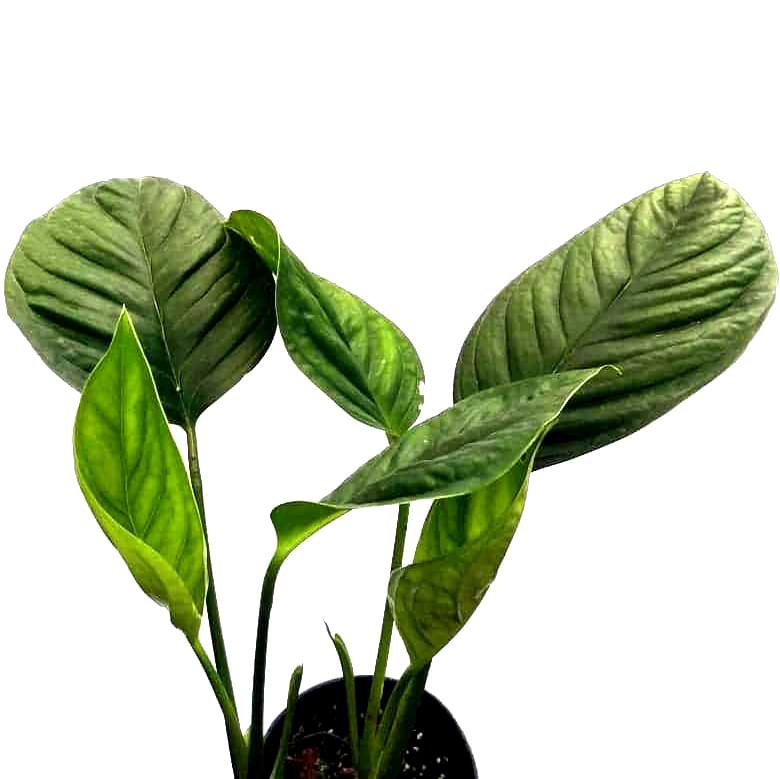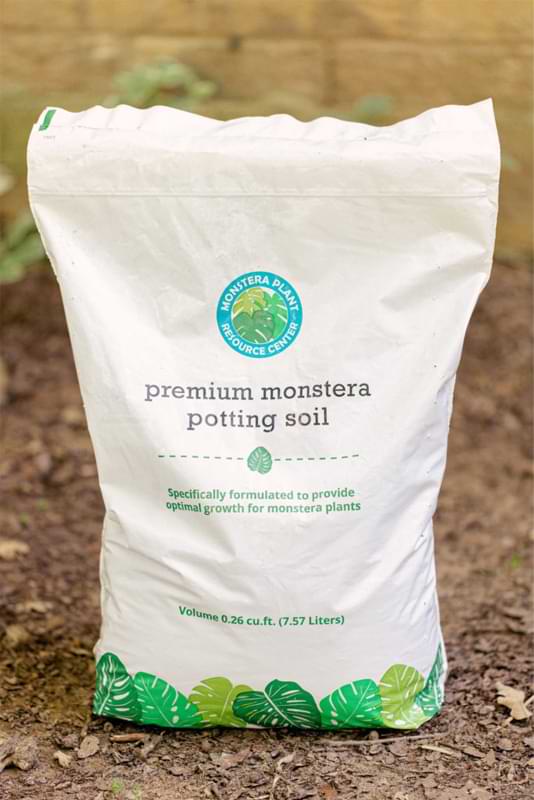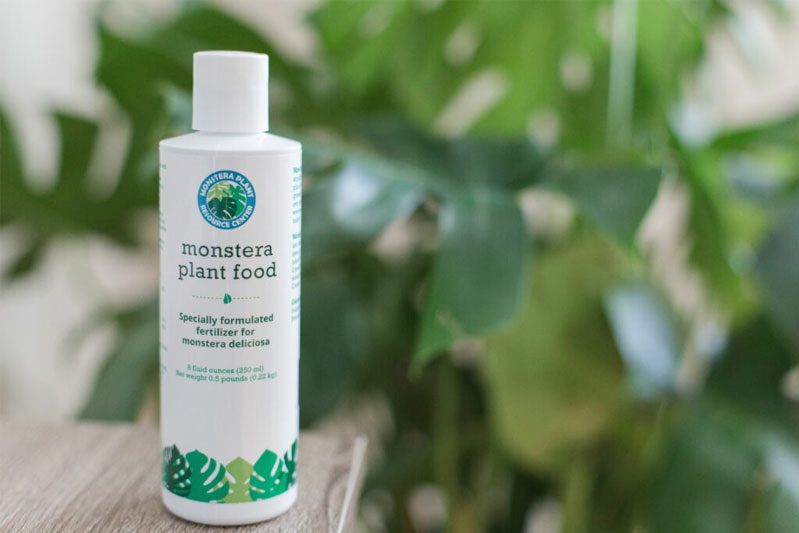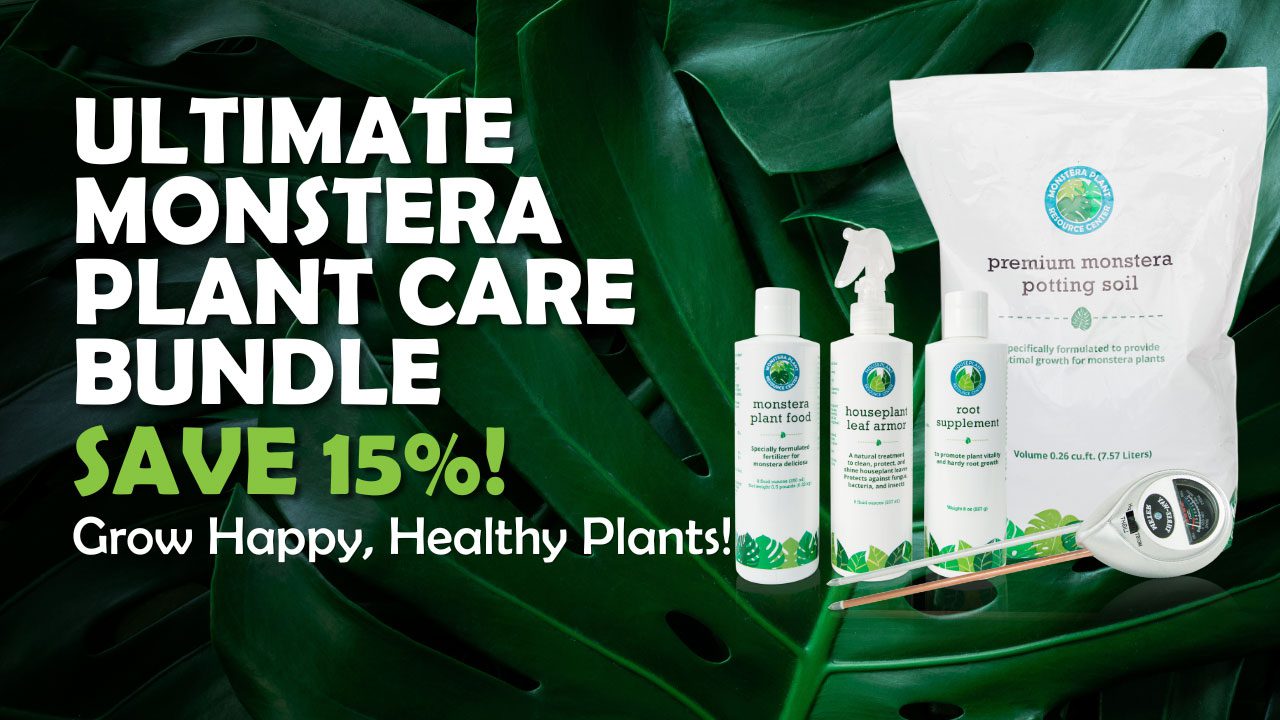Monstera Radicans is a beautiful and unique plant that can add life and personality to any home. But like all plants, they require proper care and attention to thrive. Now, caring for these plants is not difficult; there are just a few things you should know in order to help this beautiful plant thrive in your home. From watering schedules to fertilizing tips, we will cover everything you need to keep your plant healthy and happy.
Table of Contents
Identifying Monstera Radicans
When trying to identify the beautiful Monstera radicans species, keep these identifying features in mind. For one, the leaves of this plant are typically much larger than those of other Monstera species, and they also have a tendency to be more deeply lobed. The leaf surface is also usually covered in small, dark-colored spots.
Additionally, the stems of Monstera radicans are typically much longer and more slender than those of other Monsteras, and they often have small spines along their length. If you’re ever unsure what type of Monstera you’re looking at, your local plant store may be able to help you identify it, or you can use visual guides online to help identify it.
Monstera Radicans Care Guide
Caring for a Monstera radicans is similar to caring for any other monstera variety, so if you’re familiar with other types of monsteras, caring for a radicans should be relatively easy. Here’s a quick guide to outline some of the best practices when caring for your Monstera radicans.
Soil
The soil you plant your Monstera in is important for its health. Your monstera will do best in a soil that is specifically made for monstera plants. This will make sure that your plant is getting the nutrients it needs, and that it has the right amount of drainage and moisture retention to keep your plant happy.
Light
Light is one of the most important factors in caring for Monstera radicans. These plants need bright, indirect light to thrive. A south-facing window would give them a good variety of morning and afternoon sun. Just make sure that they are not in direct sunlight, as it could scorch your plant’s leaves.
Monstera radicans also enjoy being outdoors in the summer months. They will benefit from being placed in a shady spot during hot weather. It is important to bring them indoors before the first frost of winter.
Water
These plants are native to tropical climates and prefer to be kept moist, but not soggy. Water the soil around the plant, allowing the water to seep down to the roots. Water until it drains out of the bottom of the pot.
Make sure you don’t let your Monstera radicans sit in water, as this can lead to root rot. Allow the top inch of soil to dry out before watering again. Monstera radicans should be watered about once a week. However, during hot summer months, you may need to water more often if the soil dries out quickly.
Temperature
Monstera radicans thrive in warm temperatures and humidity. They prefer daytime temperatures of 70-85 degrees Fahrenheit and night-time temperatures of 60-75 degrees Fahrenheit. The ideal temperature for monstera radicans is 75 degrees Fahrenheit. If your home stays cooler than this during the winter, consider grouping it with some other houseplants to retain some heat and humidity.
Humidity
Monstera radicans is an evergreen, climbing plant that is native to the tropical rainforests of South America, so this plant prefers high humidity. It will tolerate lower humidity levels but may experience some leaf-drooping. If your home is dry, you can increase the humidity around your monstera by placing it on a pebble tray, grouping it with other plants, misting it regularly, or using a humidifier near it.
Fertilization
Fertilization is an important process for keeping your Monstera Radicans healthy. Fertilizing your plant will help it grow faster and produce more leaves. There are a few things to keep in mind when fertilizing your Monstera Radicans:
- Use a balanced fertilizer that is high in nitrogen, phosphorus, and potassium.
- Apply the fertilizer to the soil around the base of the plant, being careful not to get any on the leaves.
- Water the plant after fertilizing, to help the fertilizer reach the roots.
- Fertilize your Monstera Radicans every two weeks during the growing season (spring and summer), and once a month during the winter.
A fail-proof way to ensure your monstera is getting the nutrients it needs is by feeding it with an every-day plant food. This specially formulated monstera food gives your plant everything it needs every time you water your plant, meaning you don’t have to keep track of a fertilizing schedule!
Repotting
It’s important to know when and how to repot your Monstera Radicans. The best time to do so is in the spring, before the plant begins its vigorous growing for the season. Repotting will help encourage new growth and keep your plant healthy.
To repot, first choose a pot that is 1-2 inches wider than the current pot. Place some fresh, well-draining potting mix in the bottom of the new pot. Carefully remove your Monstera Radicans from its current pot, taking care not to damage the roots. Place the plant in the new pot and fill in around it with more potting mix. Water well and place in a bright spot out of direct sunlight.
Pruning
Pruning is an important part of caring for your Monstera radicans. Pruning not only helps to keep your plant looking its best, but also helps to encourage new growth. When pruning your Monstera radicans, be sure to use sharp, clean pruning shears. The best time to prune your Monstera radicans is in late winter or early spring. This will give the plant plenty of time to recover from any damage caused by pruning before the growing season begins.
Step By Step Guide To Propagation
Propagating your monstera radicans is an excellent way to fill your home with new plants without buying new ones. You can also propagate this beautiful plant to share with friends and family as a wonderful and thoughtful gift. Simply follow this step-by-step guide and you’ll have as many plants as you can handle!
First, collect a few stem cuttings from an existing plant. Make sure each cutting has at least two leaves and is about four inches long. Cut the stem at a 45-degree angle just below a leaf node (the point where the leaves attach to the stem).
Next, you can choose to propagate your cutting in soil or in water. Each method has its pros and cons, and you can even try both to see which method works best for you. You can also try air layering for propagation. Keep reading to learn how to try that method.
How To Propagate in Soil
To propagate in soil, take your cutting and remove any leaves from the bottom half of the stem. This will help prevent rot and encourage new root growth. Dip the cut end of the stem into some rooting hormone, then insert it into the moistened potting mix. Gently firm the mix around the base of the cutting, then water it again.
Place your pot in a warm, bright location out of direct sunlight and keep an eye on the soil level, watering as needed to keep it moist but not soggy. In 4-6 weeks, you should see new growth appearing on your cutting, at which point you can begin slowly acclimating it to life outdoors if desired.
How To Propagate in Water
To propagate your cutting in water, all you have to do is place the cutting in a glass or jar filled with water. Make sure that the water level is high enough to cover at least half of the leaf nodes on the cutting, and that there aren’t any leaves or leaf stems in the water. Place the container in a bright, indirect light location and wait for roots to form.
Roots should form within 1-2 weeks. Once they are several inches long, you can transplant the cutting into your well-draining soil. Be sure to give it plenty of water until it becomes established in its new home!
How To Air Layer Your Monstera
Air layering is a great way to propagate your Monstera radicans. It is a simple process that can be done with just a few supplies. Here is everything you need to know about how to air layer your Monstera radicans.
Supplies Needed:
-Clean, sharp knife
-Clean, sharp pruning shears
-Peat moss
-Cling wrap
Instructions:
- Begin by using your sharp knife to make a clean cut halfway through the stem of your Monstera radicans, about 6 inches below a leaf node. Be sure to make the cut at a 45-degree angle.
- Next, stuff the peat moss around the cut area of the stem, packing it in tightly.
- Finally, wrap the entire area tightly with cling wrap. You can secure it in place with tape if you feel it needs extra support to stay in place.
- Leave the air layer in place for several weeks until you see new roots forming. Once the roots are established, you can carefully cut the stem below where the new roots have developed and pot up your new plant!
Common Problems
Some of the most common problems people face with their monstera radicans are root rot, pests, and discolored or drooping leaves. Here is a closer look at each of these problems, along with what you can do to fix them.
Root Rot
Root rot is a common problem with monstera radicans. It is caused by too much water around the roots of the plant. The roots of the plant will decay and turn black. Root rot is mainly caused by over-watering, which will saturate the soil and prevent oxygen from reaching the roots. Once root rot has set in, it is very difficult to treat and the plant will usually die, which is why it’s something that needs to be caught early on to save your plant.
To prevent root rot, it is important to water your monstera radicans only when the top inch of soil has dried out. Allow the water to drain freely from the pot and do not allow the pot to sit in water. Be sure to check the roots of your plant regularly for signs of rot, such as blackening or softening of the roots. If you notice any of these signs, remove the affected roots immediately and replant in fresh soil, and treat with our Root Supplement.
Pests
Pests are one of the biggest problems that monstera radicans face. These plants are susceptible to a variety of pests, including mealybugs, spider mites, and scale insects. If your plant is infested with pests, you may notice yellowing or browning leaves, stunted growth, or leaf dropping.
The best way to control pests on monstera radicans is to prevent them from becoming a problem in the first place. Be sure to inspect your plant when you bring it home from the store or nursery. Look for signs of pests such as webbing or eggs on the leaves. If you find any pests on your plant, remove them immediately with a cotton swab dipped in rubbing alcohol.
In addition to inspection, there are a few other things you can do to prevent pests on monstera radicans. One is to water your plant with insecticidal soap or neem oil. These products will kill any pests that come into contact with them. Finally, make sure that your plant has plenty of air circulation by keeping it away from other plants and not.
Brown or yellow leaves
If your Monstera radicans plant has brown or yellow leaves, there are a few potential causes. First, it could be due to too much sunlight. Monstera radicans plants prefer filtered light, so if yours is getting direct sun, the leaves may turn brown or yellow. Second, the plant may not be getting enough water. Over-watering can also cause brown or yellow leaves, so check the soil before watering to make sure it’s dry.
Your plant could also lack nutrients. Try giving it a balanced fertilizer every few weeks or a liquid plant food to see if that helps. Finally, if you live in a dry climate, the air around your plant may be too dry, causing the leaves to brown or yellow. Try misting the leaves with water every day or placing a humidifier near your plant.
Drooping Leaves
If you see your Monstera radicans leaves drooping, it is likely because of one of two reasons: either the plant is not getting enough water or the plant is getting too much water. If the soil is dry to the touch, water your plant, and if the soil is soggy, allow the top inch of soil to dry out before watering again.
FAQ Monstera Radicans
What’s the difference between Monstera Radicans Vs Peru?
Monstera Radicans and Peru are two different species of the Monstera plant. Both plants are native to Central and South America, and both have large, glossy leaves. The main difference between the two plants is their size; Monstera Radicans is a much smaller plant than Peru. Peru can grow up to 10 feet tall, while Radicans only grows to about 3 feet. Another difference is that Peru has white flowers, while Radicans has yellow flowers.
More Monstera Resources
While caring for a Monstera radicans might be a little more touchy than growing a Monstera deliciosa, this is still a very approachable rare plant variety that might be a great choice if you’re looking to add an impressive but relatively low-maintenance gem to your collection. Give it a shot!
Check out our other free resources to become a monstera plant care expert!







